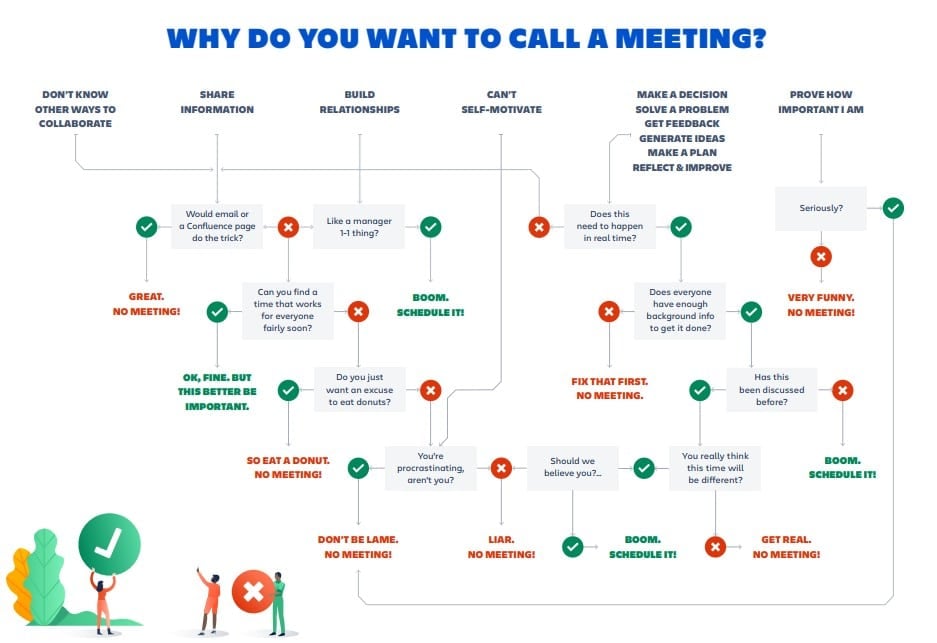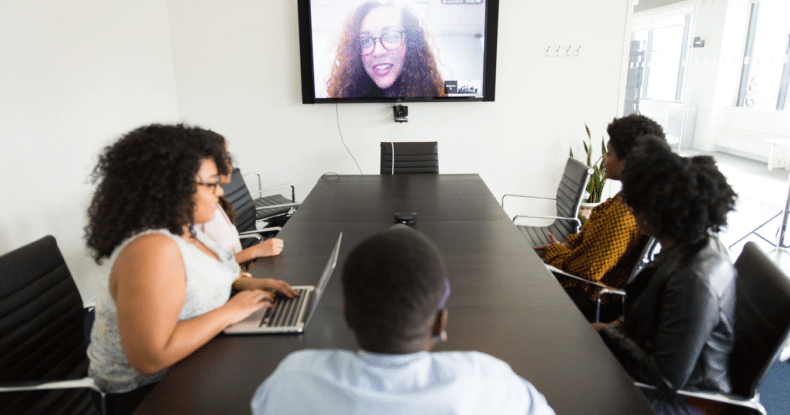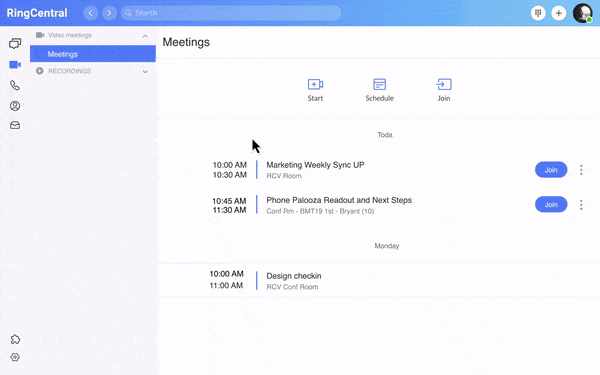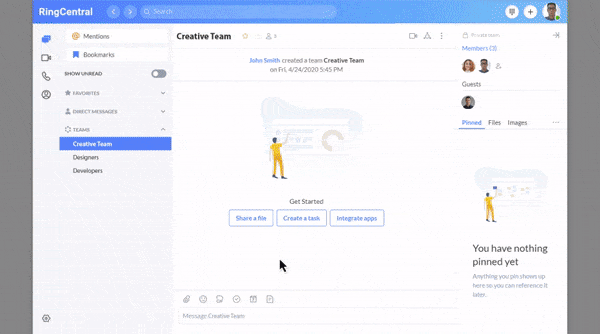This blog is the first part of RingCentral’s Make Meetings Matter series. We offer up advice on how to make all meetings purposeful, engaging and effective.
The elephant in the room when it comes to communications: While meetings can be critical to business operations and driving momentum, the large majority of meetings we experience are not. Why is that? If we are honest with ourselves, only a few people like in person or virtual meetings. Those are the people whose personalities sway towards wanting a high degree of collaboration in their projects or need a sense of consensus to move forward (more on consensus being bad for decision making later).
Most team members would rather spend time working on delivering projects than sit in a meeting. This, coupled with the fact that most meetings are disorganised, mismanaged or end up being wasted time, has made them an unpopular part of our work-life routine.
For leaders, this makes it difficult to get team members on the same page and collaborating effectively. With the advent of remote working and new technologies, many meetings take place virtually, which adds another level of complexity. Most team members who join virtual meetings are often multitasking or working on other things simultaneously.
Understanding how to have effective virtual meetings is one of the most important skills to master in 2021. Yet, according to this study, ineffective meetings waste an estimated $37 billion a year. Another study in the Journal of Organisational Behavior found that, while wasting time is typically unacceptable in all other aspects of business life, “in the case of meetings, wasted time seems to be an accepted norm.”
We are making meetings sound bleak and useless, which in fact, they are not. According to Google’s former CEO, a well-run meeting is “the most efficient way to present data and opinions, to debate issues, and yes, to make decisions,” Eric Schmidt writes in the new book “How Google Works.”
As cloud collaboration experts, we’ve spent some time researching how to run efficient, impactful and outcome-driven meetings. Here’s a collection of our industry best practices for running meetings:
Seek to run fewer meetings
This one sounds counterintuitive, but less does equal more here. As businesses get bigger and more complex, there’s a tendency to rely on meetings to increase communication and transparency. But in our opinion, you should avoid calling a meeting 75% of the time.
So when you are thinking of calling a meeting, question whether or not you and the people you plan to involve can do without it. And as an invitee, you should feel empowered to push back if you don’t think it’s a good use of your time. Take command of your time and excuse yourself from a meeting if it’s not useful. Go ahead – decline that invite or ask how you will contribute to this discussion/outcome they are seeking.
For the 25% of the time where a meeting is necessary, make sure every participant is getting the most out of it. More on this later.
Every meeting needs a directly responsible individual (DRI)
“A meeting between two groups of equals often doesn’t result in a good outcome, because you end up compromising rather than making the best tough decisions” Eric Schmidt and Rosenberg write in “How Google Works”.
They recommend designating a clear “decision-maker” or “directly responsible individual “(also known as the DRI) so that everyone in attendance knows who has the final word.
Every calendar invite needs a clear agenda
Few things are more irritating than the person who sends a meeting invite with no indication or clue of what will happen in the meeting. Don’t be that person.
When a DRI calls a meeting, every calendar invite must be sent out with a defined agenda. I repeat: never send out a calendar invite to anyone without a defined agenda.
Bonus activity: outline your desired outcome from the meeting in the calendar invite as well. Clearly articulating the objectives of the meeting is the first step to determining if you need a meeting on this topic. You might find that you thought you needed a meeting, but when you write the agenda, you realise that you could just send out a mass team message instead. Including your agenda in the invitation also helps attendees determine whether they need to be there and, if not, decline the meeting or suggest someone else. I suggest sharing the agenda when you schedule the meeting at least 24 hours in advance.
People should never hold meetings for the sole purpose of sharing information – that’s what email, chat and company intranets like Confluence are for. Department and company all-hands meetings are a notable exception. They provide a unique chance for people at all levels of the business to hear directly from executives and other decision-makers – and, if you include time for Q&A, vice-versa.

Download this chart! Click here.
At the very least, a good meeting will centre on a discussion that will be more effective in real-time than asynchronously (ie via emails or comment threads). Examples include team or project retrospectives, brainstorming, and one-to-one meetings between managers and their direct reports.
The DRI of the meeting is then responsible for summarising the meeting’s agreed on outcomes and communicating (email or messages) tasks to every participant and anyone else who should be informed (within 48 hours).
Be fully present
If you decide to accept the meeting invitation, then really accept the invitation to participate. Avoid side conversations and put away laptops and phones. If the meeting is so slow-moving you feel the need to jump on your team messaging platform or work on something else; you probably shouldn’t be in that meeting in the first place.
Either participate or excuse yourself. If you’re not adding value or could spend your time better doing anything else, politely excuse yourself from the meeting, with one exception: company all-hands.
An effective meeting is like Burning Man: there are no spectators – only participants!
Don’t include more than 8 to 10 people – the ‘two pizza team’ theory
“We try to create teams that are no larger than can be fed by two pizzas,” said Bezos. “We call that the two-pizza team rule.”
Jeff Bezos is famously stringent about meetings across Amazon. He keeps them small, bans presentations, and each session starts in silence as the group reads through a memo on why the meeting is taking place. While all of Bezos’ tactics may not apply to everyone, we do like his idea of the ‘two pizza team’.
Choose meeting participants who can make a unique contribution. Time is our only non-renewable resource and therefore expensive, so be thoughtful about who you invite. To be sure, you want to invite the minimum number of people needed to achieve your goal. But you also want the group to bring diverse perspectives and knowledge, especially if the purpose of the meeting is decision-making or brainstorming. Sadly, there’s no magic formula for balancing cost against the potential for creativity, so you’ll need to use your best judgment. We tend to use the rule of thumb of 8-10 people at RingCentral for maximising collaboration with output.
Strictly follow time constraints
Start and end on time, and leave room at the end to summarise the discussion. If the meeting needs to run beyond the set time, incorporate appropriate breaks into the schedule. If you wrap things up early, don’t feel like you need to fill in the remaining time. The sooner everyone gets back to work, the better.

“Good meetings have a clear beginning, an efficient discussion, and a thorough wrap-up with action items. To achieve that, keeping an eye on the clock is essential. We usually like to make meetings 45 minutes long for three reasons: encourage participants to get straight to the point, give people a break in between sessions and have a sufficient buffer to overlap in case the discussion absolutely requires it.”
- Julien Rio, AVP International Marketing, RingCentral
Make meetings remote-friendly, always
Even if everyone in the group has a desk in your office, it’s always a good idea to set up your meeting to be accessible to everyone and valuable for people joining remotely.
You might even have the entire group join remotely from their desks. This is something we do at RingCentral religiously, even if even one person is remote. It puts everyone on a level playing field and encourages more balanced participation. Plus, nobody likes being the giant head on the TV screen at the front of the room.
Seek feedback, not consensus
Don’t let consensus stifle your decision making and momentum. This is something we have learned from the great Elon Musk.
We seek feedback from all participants to get the best outcome, not to create agreement. On top of this, we emphasise feedback that comes directly from customers (attribute 2x weight on feedback from customers vs feedback from internal employees). We don’t vote on ideas or decisions. The best idea will never sound like the best idea to everyone, so we let our customers validate our decisions and let the meeting DRI make the final decision and own the outcomes of that decision. This is called ‘practising extreme ownership’. The customers’ vote will always be more vital to the business than the committees’ consensus. Giving employees the autonomy to own something results in more engaged decision making than decision making by consensus, and in the latter, you are seeking validation.
If the meeting isn’t effective, change it!
The fact that you’re still reading means you’re committed to running a great meeting. It turns out, though, you’re not the sole judge of whether the meeting was productive or not. Discuss the experience with your fellow attendees, and solicit feedback with questions like:
- Did this meeting result in something of value?
- Did we include the right people? If not, who should we include in the future?
- Were the meeting’s purpose and agenda clear?
- Was it easy for you to contribute to the discussion?
- For recurring meetings: are we holding this meeting on the right cadence? If not, how should we adjust?
Even if the meeting was a one-off, this feedback will help you plan even better for your next meeting. Keep an ongoing, open dialogue amongst the people you meet with most frequently, and emphasise progress over perfection.
Originally published Jul 08, 2021, updated Aug 18, 2021



